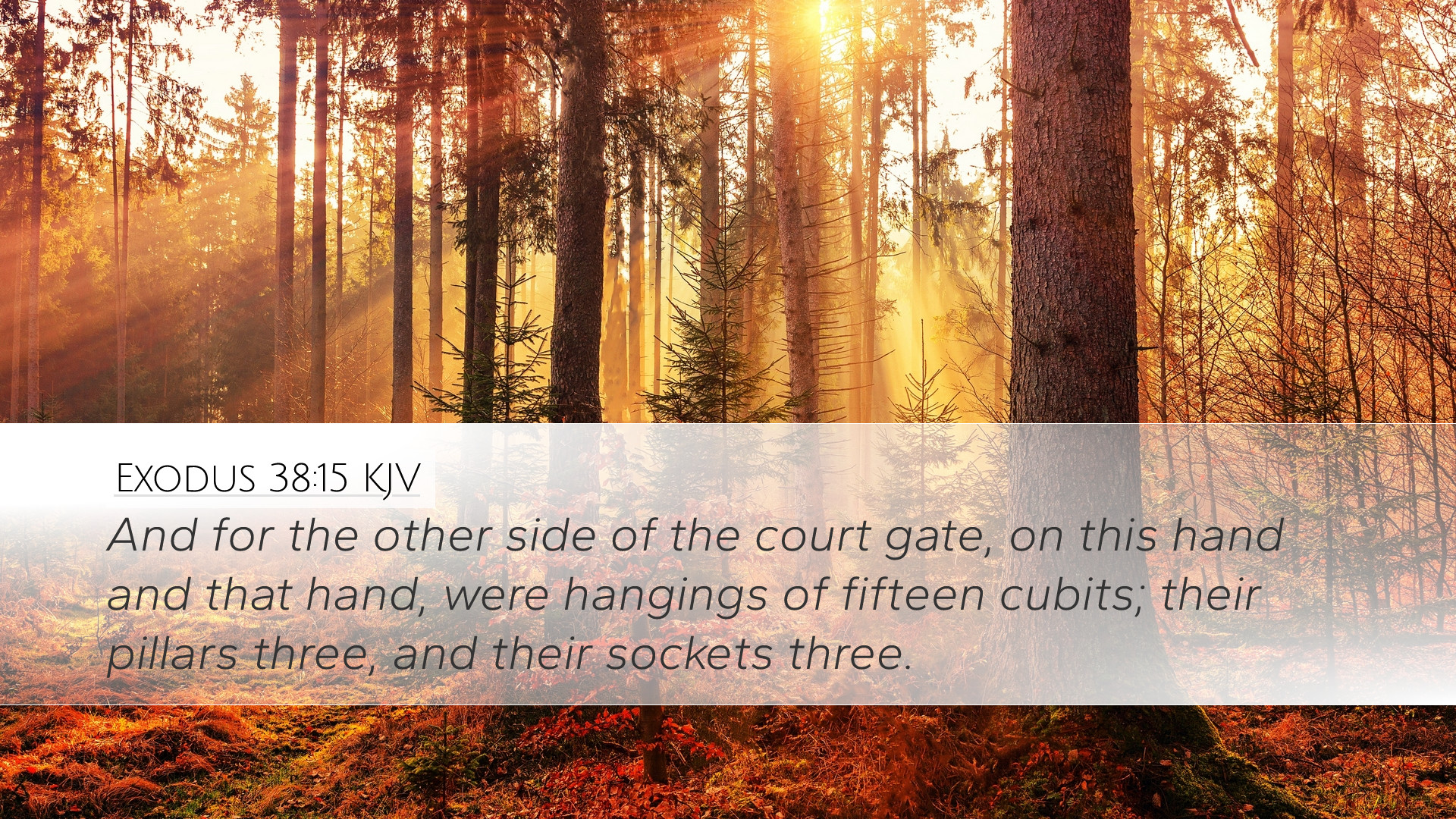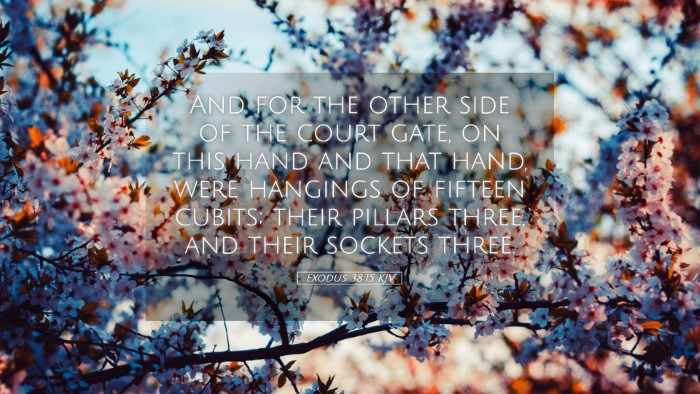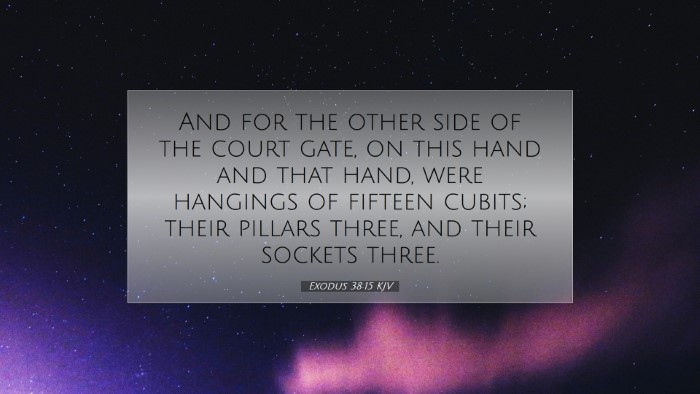Commentary on Exodus 38:15
Verse Context and Overview
Exodus 38:15 refers specifically to the construction of the Tabernacle, detailing the means by which the outer court was organized. This verse belongs to a segment of the account where God provides instructions to Moses on how to build the sacred dwelling place—a precursor to the temple and a significant structure in Israelite worship.
Text of Exodus 38:15
"And for the other side of the entrance, on its left, there were hangings of fifteen cubits, with their pillars and their sockets."
Insights from Public Domain Commentaries
Matthew Henry's Commentary
Matthew Henry emphasizes the importance of the precise details provided in the construction of the Tabernacle, illustrating God’s desire for order and beauty in worship. He notes that the hangings on both sides of the entrance serve not only a practical purpose but also a symbolic one, representing the separation of the sacred from the common.
Henry points out that the **fifteen cubits** of hangings indicate completeness in terms of God's provision. The symmetrical nature of the entrance signifies the balance and harmony within the worship that God desires from His people. This particular arrangement invites worshippers to enter into a space dedicated to divine encounter.
Albert Barnes' Notes on the Bible
Albert Barnes provides insight into the materials used and their significance. He notes that the hangings were typically made of fine linen, dyed with purple, blue, and scarlet threads—indicating wealth and richness in the covenant worship experience.
Barnes also states that the structure was intentionally designed to depict a sense of holiness and reverence. The hangings, which form the entrance, are more than mere fabric; they symbolize the barrier between the holy and the profane, emphasizing that access to God requires recognition of His holiness.
Moreover, Barnes analyzes the **fifteen cubits** length, indicating God's meticulous attention to each detail. Each measurement in the Tabernacle's construction leads to a deeper understanding of God's presence among His people, urging His followers to acknowledge His majesty.
Adam Clarke's Commentary
Adam Clarke reflects on the construction elements and their theological implications. He elaborates on the physical and spiritual significance of the hangings, considering them as a representation of the veil that separates God from humanity due to sin.
Clarke makes pertinent connections to New Testament themes, suggesting that the curtain or hanging at the entrance can be seen as a precursor to the ultimate sacrifice of Christ, who would tear down the dividing wall between God and man (Hebrews 10:19-20). This foreshadowing reveals God's salvation plan and the restoration of fellowship through Jesus.
Additionally, Clarke emphasizes the aesthetic aspect of worship that was built into the very fabric of the Tabernacle, reminding us that worship, through beauty and design, reflects God’s nature and invites believers into His presence.
Theological Implications
The construction of the Tabernacle, particularly highlighted in Exodus 38:15, has profound implications for theology, worship, and ecclesiology. The specificity in design reflects God's desire for holiness and order in worship and the life of the believer. The meticulous details of measurements and materials tantamount to understanding God's nature—a God of variety, beauty, and holiness, who invites humanity into communion with Himself.
- The Holiness of God: The hangings symbolize the barrier created by sin and the necessity for sanctification in approaching a holy God.
- Access to God: The design of the entrance signifies that while there is a barrier, God provided a way to draw near, foreshadowing New Testament revelations.
- Covenantal Worship: The intricacies of the Tabernacle's design indicate a structured and communal aspect of worship that is relevant for the church today.
- Symbol of Christ: The elements of the Tabernacle lead to reflections on Christ's role as mediator, breaking the barriers set by sin and offering access to the Father.
Conclusion
Exodus 38:15 serves as a foundational scripture for understanding the nature of God's relationship with His people through worship. Pastors, theologians, and Bible scholars can glean insights into the significance of worship's physical forms and structures, appreciate the holiness and beauty intertwined in God's instructions, and recognize the prophetic foreshadowing of Christ's atoning work in the symbols of the Old Testament. This verse, like many others throughout Scripture, reaffirms that the overarching narrative of the Bible is centered on God's desire to dwell among His people and the path He provided to facilitate that relationship.


